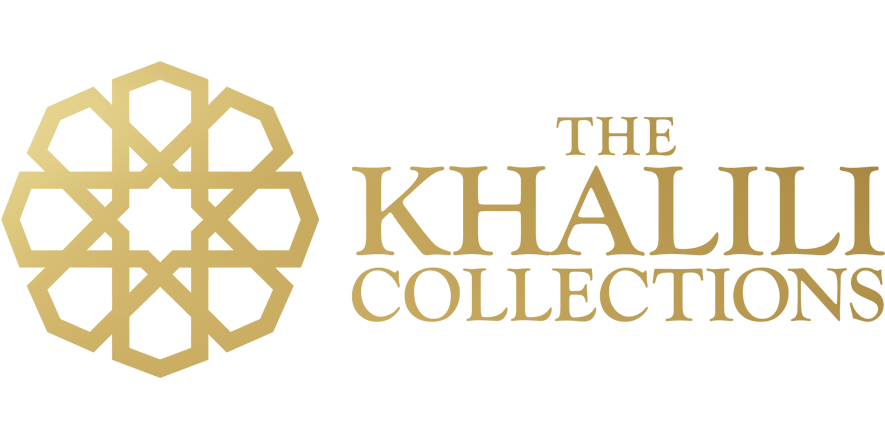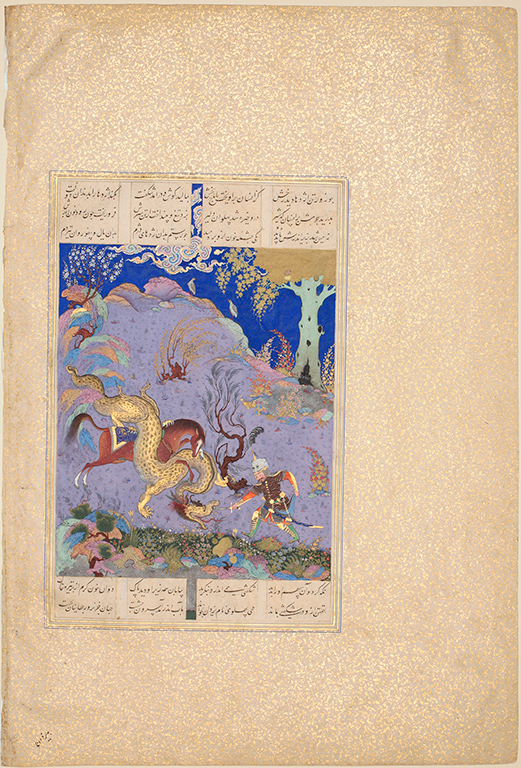



Title: Rustam slays a dragon
Date: 1520s
Location: Tabriz, Iran
Materials: ink, gold and opaque watercolour on paper; margins heavily sprinkled with gold
Dimensions: 47.2 x 31.9cm (folio); 26.9 x 16.9cm (written surface, recto); 27 x 17cm (illustration, verso)
Accession Number: MSS 1030, folio 119
Other Notes:
On seeing the dragon’s might and how it battled with Rustam, Rakhsh – Rustam’s horse – laid its ears back and joined the fight. The horse, fighting like a lion, bit the dragon’s shoulders and tore at its hide. Rustam then slashed off the dragon’s head with his sword and blood jetted out in rivers as the dragon fell to its death.
[For the Shahnamah of Shah Tahmasp, see MSS 1030]
Script:
text copied in a superior nasta‘liq script, with 22 lines to the page, arranged in 4 columns, two to a couplet
Bibliography:
J.M. Rogers, The Arts of Islam. Masterpieces from the Khalili Collection, London 2010, cat.304, p.266.
Zoom
Close
